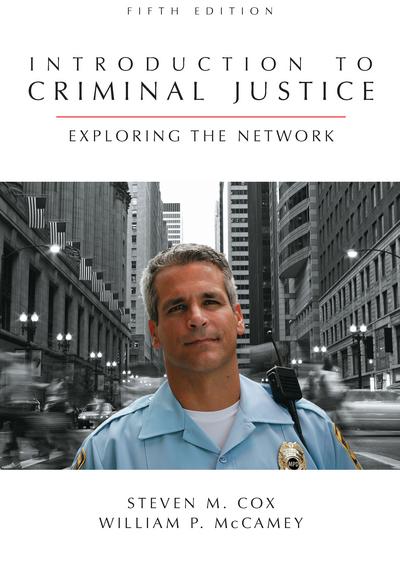Introduction to Criminal Justice
Exploring the Network
Fifth Edition
by Steven M. Cox, William P. McCamey
2008
Tags: Criminal Justice Education; Criminal Justice/Law Enforcement; and Introduction to Criminal Justice
Teacher's Manual available
472 pp $50.00
ISBN 978-1-59460-402-7
eISBN 978-1-61163-231-6
The field of criminal justice is constantly changing as new laws are passed, new technology is deployed, old social problems continue to fester and surface, and new social problems emerge. The police are accused of racial profiling, of charging innocent people with crimes they did not commit or that did not occur, and of allowing corruption to run rampant in big-city police departments. At the same time, community policing brings relief to neighborhoods plagued by crime and disorder for decades and the police have become guardians of public safety in the battle against terrorists.
Overcrowding in the courts leads to a denial of justice for many defendants, but restorative justice offers alternatives to traditional court proceedings and holds out hope for both victim and offender. New supermax prisons are built to house society's most dangerous offenders while new and exciting alternatives to incarceration are explored. Helping students understand the nature and extent of such changes and the interrelationships among them is the goal of this text.
In this edition, not only is there a new co-author, but we have made numerous other changes which include:
- Updated references
- Discussion of recent cases which have attracted national attention
- Coverage of recent trends and concerns in criminal justice
The fifth edition also features:
- Expanded discussion of ethics (Chapter 2)
- Expanded discussion of some types of crimes (Chapters 3 and 4)
- Discussion of federalism (Chapter 3)
- Coverage of the rise in use of methamphetamines
- Coverage of Internet crimes in our discussion of white collar offenses (Chapter 5)
- Discussion of problem-oriented and community-oriented policing (Chapter 6)
- Coverage of new issues in corrections (Chapter 12) and victim/witness rights (Chapter 11), including the rebirth of restorative justice
Pedagogical Aids
To enhance learning, we have included the following devices in every chapter:
- Chapter-opening vignettes to capture student interest
- Chapter outlines to provide a road map to reading each chapter
- In-chapter "In the News" boxes to help students see the practical application of what they are reading
- End-of-chapter "Internet Activities" to encourage students to use the net as a research and learning tool
- End-of-chapter summaries and key terms lists to help students prepare for exams
- End-of-chapter "Critical Thinking Exercises" to encourage students to go beyond memorization of terms and concepts in their learning
The Teacher's Manual is available electronically on a CD or via email. Please contact Beth Hall at bhall@cap-press.com to request a copy. PowerPoint slides available upon adoption. To view sample slides from the 924-slide presentation, click here. Email bhall@cap-press.com for more information.
Comp Copy If you are a professor teaching in this field you may request a complimentary copy.


